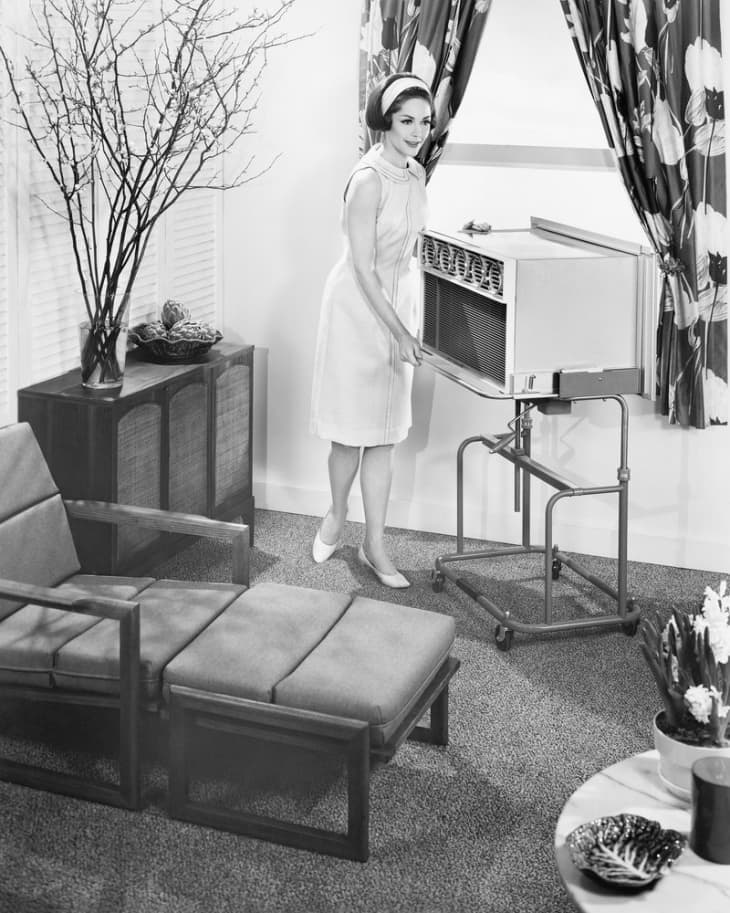How Did People Survive Before Air Conditioning?

Probably everyone has had this thought at least once a summer while sweating through their clothes on a subway platform or in a parking lot, desperate to locate their car: how did people survive before air conditioning? Although we may not be able to imagine summer without it, prior to its invention in 1902, people did still manage to live and go about their business in New York, and even in cities like Savannah and New Orleans.
How did people live with no air conditioning?
Wondering how people survived all those sweaty summers prior to A/C? Here’s how they did it.
1. They built their houses differently
We may not think about it much, but the invention of the air conditioner radically changed the way people built buildings, especially in the south. You may have noticed that older buildings tend to have much higher ceilings: this allowed heat to rise so that inhabitants could enjoy the cooler space below.
Deep eaves and porches protected windows from the heat of the sun, and it was common to plant trees on the east and west sides of a house for additional shade.
In addition to this, rooms were designed with windows on opposite sides of the space, which allowed for cross ventilation. Air likes to have a place to go, so opening up a single window won’t generate much air movement, but open two windows right across from each other and you can get a nice breeze going.
In cases where it wasn’t possible to have two windows on opposite sides of a single room, architects would line up rooms in a row, allowing air to flow between them. You can see this in old shotgun homes in New Orleans, or in railroad apartments in New York.
2. They got outside
Currently, the porch, like the fireplace, is a charming but somewhat vestigial architectural feature. But in the past porches were incredibly important, not just for shading the windows of a home, but also for providing a place where people could sit outside, out of the glare of the sun, and perhaps enjoy a breeze.
These days, when it’s hot, people flock inside, but in the past it was the opposite: temperatures indoors and out were more or less the same, and the porch was much less stuffy than the rest of the house. This led to a whole culture of people sitting outside on their porches after supper, which essentially disappeared.
Some older houses were also built with sleeping porches, screened-in porches where one could sleep during the summer, enjoying the breezes but protected from bugs. New Yorkers replicated this by sleeping on the fire escape on especially hot days.
3. They took naps
One way to cope with the heat of the sun is by changing your schedule. People in parts of southern Spain still do this — they nap during the hottest hours of the day, resume work later in the afternoon, and then shop and socialize once the sun has gone down. People in the American south used to do this too — witness the scene in Gone with the Wind where all the ladies take naps.
4. They went to the movies
Even after the invention of the air conditioner in 1902 (and the window unit A/C in 1939), air conditioners were prohibitively expensive and still out of the reach of most people. The one place in most towns that was air-conditioned was the movie theater. People would flock there to enjoy the artificially cooled air, which helped contribute to the rise of the summer blockbuster.
5. They got creative
We have a post on Apartment Therapy, one that I find particularly fascinating, about how people who don’t have A/C stay cool. There are all kinds of crazy solutions in there, from cuddling frozen water bottles to braiding ice into your hair. People in the past were equally resourceful — in my reading, I encountered everything from hanging wet laundry in doorways (creating a sort of swamp cooler effect) to (allegedly) placing one’s underwear in the icebox. Unorthodox — but if my A/C were out, I might be tempted to try it.
For further reading: